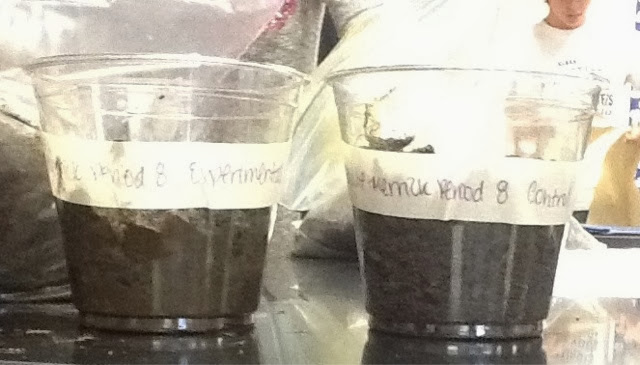In our fertility tests, we found that our soil had low amounts of phosphorus, nitrogen, and potassium. In the Berlese funnel and organic matter test, we found that there were not very many organisms living in it. This could be because of the low amounts of nutrients it contained. This is one correlation between the fertility of the soil and the organisms in it. Another would be the pH level in the soil. It is approximately 6.5, which is slightly acidic and may not be suitable for some organisms to live in. This soil was eventually used for growing lettuce seeds, whose ideal pH is between 6.0 and 6.7, so our soil pH was something we didn't want to affect with our changes.
When remediating the soil, we wanted to increase the levels or phosphorus, nitrogen, and potassium without changing its pH. To do this, we used Vigoro fertilizer. We chose this fertilizer because it had higher levels of the three nutrients we needed than the others provided.
The box said to use 3 tablespoons of the powder fertilizer for every 1 gallon of water. We scaled this down to about the amount we would need for our small cup and dissolved 0.6 grams of fertilizer in 20 mL of water. This mixture was then added to our cup of 150 mL of soil and thoroughly mixed together to evenly distribute the nutrients throughout the cup.
Because of the texture of our soil and its porosity, mixing water into the soil caused it to become more compact. If we were to redo this experiment, we would add the same amount of water, without fertilizer, to the control cup and mix it thoroughly as well.

The remediated soil (left) and control soil (right).
Our goal with this remediation was to allow the lettuce seed to grow more quickly than the control group. To see the results of the lettuce seed growing, please refer to our Controlled Experiment: Lettuce Seed Growth post.


No comments:
Post a Comment